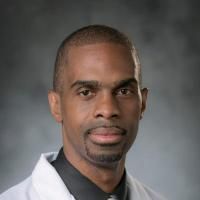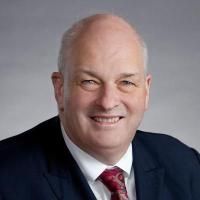Demographics, Mechanism of Injury and Outcomes for Acute Upper and Lower Cervical Spinal Cord Injuries - An Analysis of 470 Patients in the Prospective, Multicenter North American Clinical Trials Network (NACTN) Registry.
Date
2023-02
Journal Title
Journal ISSN
Volume Title
Repository Usage Stats
views
downloads
Citation Stats
Attention Stats
Abstract
There is a paucity of data comparing the demographics, mechanism of injury, and outcomes of upper versus lower cervical spinal cord injuries (cSCI). The study objective was to define different clinical manifestations of cSCI. Data were collected prospectively through centers of the North American Clinical Trials Network (NACTN). Data was collected on 470 patients (21% women, mean age 50 years). Cervical vertebral level was analyzed as an ordinal variable to determine a natural demarcation to classify upper versus lower cSCI. For continuous variable analysis, falls were associated with C3 more than C4 vertebral level injuries (60% vs. 42%) (p=0.0126), while motor vehicle accidents (MVA) were associated with C4 more than C3 (40% vs. 29%) (p=0.0962). Motor ISNSCI scores also demonstrated a natural demarcation between C3 and C4, with C3 having higher median ASIA motor scores (40 [4 - 73] vs. 11 [3 - 59], p= 0.0227). There were no differences when comparing C2 to C3 nor C4 to C5. Given the significant differences seen between C3 and C4, but not C2 and C3 nor C4 and C5, upper cSCI was designated as C1-C3, and lower cSCI was designated as C4-C7. Compared to a lower cSCI, patients with an upper cSCI were more likely to have a fall as their mechanism of injury (54% vs. 36%, p= 0.0072). Patients with an ASIA C cSCI were likely to have an upper cervical injury: 23% vs. 11% (p= 0.0226). Additionally, patients with an upper cSCI were more likely to have diabetes prior to injury, 37% vs. 22% respectively (p= 0.0084). Lower cSCI were more likely injured through sports (19% vs. 8%, p= 0.0171) and present with ASIA A (42% vs. 25%, p= 0.0186) neurological grade. Patients with lower cSCI were also significantly more likely to have complications such as shock, pulmonary embolism, and pleural effusion. In conclusion, there appears to be a natural demarcation of injury type between C3 and C4. Upper cSCI (C1-C3) was more associated with falls and diabetes, whereas lower cSCI (C4-C7) was more associated with sports, worse ASIA scores, and more complications. Further research will be needed to understand the mechanistic and biological differences between these two groups and whether different treatments may be appropriate for each of these groups.
Type
Department
Description
Provenance
Citation
Permalink
Published Version (Please cite this version)
Publication Info
Futch, Brittany Grace, Romaric Waguia Kouam, Beatrice Ugiliweneza, James Harrop, Shekar Kurpad, Norah Foster, Khoi Than, Clifford Crutcher, et al. (2023). Demographics, Mechanism of Injury and Outcomes for Acute Upper and Lower Cervical Spinal Cord Injuries - An Analysis of 470 Patients in the Prospective, Multicenter North American Clinical Trials Network (NACTN) Registry. Journal of neurotrauma. 10.1089/neu.2022.0407 Retrieved from https://hdl.handle.net/10161/27968.
This is constructed from limited available data and may be imprecise. To cite this article, please review & use the official citation provided by the journal.
Collections
Scholars@Duke

Khoi Duc Than
I chose to pursue neurosurgery as a career because of my fascination with the human nervous system. In medical school, I developed a keen interest in the diseases that afflict the brain and spine and gravitated towards the only field where I could help treat these diseases with my own hands. I focus on disorders of the spine where my first goal is to help patients avoid surgery if at all possible. If surgery is needed, I treat patients using the most advanced minimally invasive techniques available in order to minimize pain, blood loss, and hospital stay, while maximizing recovery, neurologic function, and quality of life. In my free time, I enjoy spending time with my family and friends. I am an avid sports fan and love to eat. I try to stay physically fit by going to the gym and playing ice hockey.

Clifford Crutcher
I am a neurosurgeon who specializes in spine surgery. I take care of people with conditions affecting the cervical, thoracic, and lumbar spine, including herniated disc, spinal stenosis, spondylolisthesis, and adult degenerative scoliosis. I also provide general neurosurgery care. I really enjoy developing a relationship with my patients and their family. I try to tailor my approach and treatment plans to each patient based on their unique goals and needs. Often, nonsurgical options are available to improve the patient’s symptoms. My goal is to help people return to their previous level of functioning and to help people enjoy life again. Outside of work, I love spending time with my wife and two children. I also enjoy fishing and running on trails.

Courtney Rory Goodwin
Associate Professor of Neurosurgery, Radiation Oncology, Orthopedic Surgery.
Director of Spine Oncology,
Associate Residency Program Director
Third Year Study Program Director Neurosciences, Duke University School of Medicine
Director of Spine Metastasis, Duke Center for Brain and Spine Metastasis, Department of Neurosurgery
Duke Cancer Institute, Duke University Medical Center

Christopher Ignatius Shaffrey
I have more than 25 years of experience treating patients of all ages with spinal disorders. I have had an interest in the management of spinal disorders since starting my medical education. I performed residencies in both orthopaedic surgery and neurosurgery to gain a comprehensive understanding of the entire range of spinal disorders. My goal has been to find innovative ways to manage the range of spinal conditions, straightforward to complex. I have a focus on managing patients with complex spinal disorders. My patient evaluation and management philosophy is to provide engaged, compassionate care that focuses on providing the simplest and least aggressive treatment option for a particular condition. In many cases, non-operative treatment options exist to improve a patient’s symptoms. I have been actively engaged in clinical research to find the best ways to manage spinal disorders in order to achieve better results with fewer complications.

Muhammad Abd-El-Barr
As a Neurosurgeon with fellowship training in Spine Surgery, I have dedicated my professional life to treating patients with spine disorders. These include spinal stenosis, spondylolisthesis, scoliosis, herniated discs and spine tumors. I incorporate minimally-invasive spine (MIS) techniques whenever appropriate to minimize pain and length of stay, yet not compromise on achieving the goals of surgery, which is ultimately to get you back to the quality of life you once enjoyed. I was drawn to medicine and neurosurgery for the unique ability to incorporate the latest in technology and neuroscience to making patients better. I will treat you and your loved ones with the same kind of care I would want my loved ones to be treated with. In addition to my clinical practice, I will be working with Duke Bioengineers and Neurobiologists on important basic and translational questions surrounding spinal cord injuries (SCI), which we hope to bring to clinical relevance.
Unless otherwise indicated, scholarly articles published by Duke faculty members are made available here with a CC-BY-NC (Creative Commons Attribution Non-Commercial) license, as enabled by the Duke Open Access Policy. If you wish to use the materials in ways not already permitted under CC-BY-NC, please consult the copyright owner. Other materials are made available here through the author’s grant of a non-exclusive license to make their work openly accessible.
